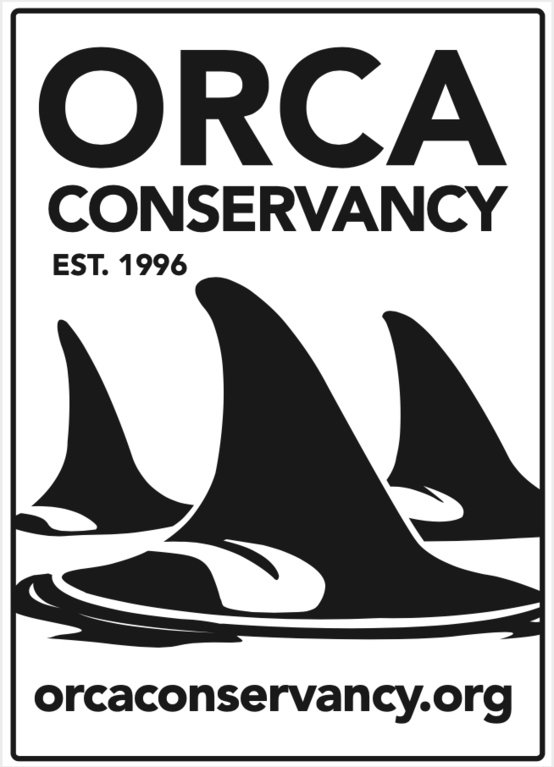Green Light for Eel Dam Removal - Brings Hope for Salmon and Orca
On Tuesday, August 19, 2025, the Humboldt County Board of Supervisors unanimously signed onto a water diversion agreement that goes hand in hand with the undamming of the Eel River. In February, the board signed onto an understanding with a rough outline of what the historic deal will look like, and Tuesday heard more particulars. The agreement demonstrates how groups with very different interests can come together and solve complex challenges with common solutions. Deconstruction could begin as early as 2028, pending regulatory approval.
BACKSTORY: The Scott Dam, diversion tunnel, and Cape Horn Dam together represented a cascade of obstacles for wild salmon in the Eel River basins (see image below). Scott Dam was built without fish passage which permanently blocked access to more than 288 miles of historic cold-water habitat in the upper Eel River, while its reservoir warms flows, traps spawning gravels, and favors non-native predators. The diversion tunnel further undermined salmon by exporting Eel River water into the Russian River, leaving the Eel starved of summer flows critical for juvenile survival while simultaneously creating stagnant, algae-prone conditions in the Russian River. The Cape Horn Dam was built with an ineffective fish ladder, which added to the urgency of dam removal efforts aimed at reconnecting critical upstream habitat for salmon and steelhead.
The result was a system in which dams and diversions not only reduced habitat and altered flows, but also degraded water quality in both rivers, severely compromising the ability of Chinook, coho, and steelhead to thrive, and in turn diminishing the prey base for endangered Southern Resident killer whales.
Photo Credit: Langridge, Christian-Smith, and Lohse.
Historically, the Eel River contained the third largest run of salmonids in California, behind the Sacramento and Klamath Rivers, collectively totaling over a million fish returning annually. The Eel River is home to fall-run California Coast Chinook salmon (Oncorhynchus tshawytscha), Southern Oregon Northern California coho salmon (O. kisutch), winter-run and summer-run North California Coast steelhead (O. mykiss), resident rainbow trout (O. mykiss), anadromous coastal cutthroat trout (O. clarkii), Pacific Lamprey (Entosphenus tridentatus) and Green sturgeon (Acipenser medirostris). Of these populations, Chinook salmon, coho salmon and steelhead have all seen dramatic declines in historic populations and are currently listed as threatened under the federal Endangered Species Act. At the same time, this massive watershed in California’s northwest corner offers the state’s best hope of ensuring a future abundance of wild anadromous fish.
While salmon runs are integral to the ecological integrity of Northern California, they are also a critical food source for the endangered Southern Resident killer whale population. Southern Resident killer whales are dietary fish specialists that depend on Chinook salmon, the most energy-dense salmonid, throughout their entire range -from Southeast Alaska to Monterey Bay. Science tells us the fluctuations in Chinook abundance are a primary driver of Southern Resident distribution, foraging success, and population viability.
Orca Conservancy has been an active voice in the effort to remove the Eel and Russian River dams to restore one of California’s most important salmon rivers. In 2017, we submitted scoping comments to the Federal Energy Regulatory Commission (FERC) during the review of the Potter Valley Project, emphasizing the Eel River’s historic role as a salmon powerhouse and the urgent need to reconnect habitat for Chinook, coho, and steelhead. More recently, in 2023, we voiced support for PG&E’s draft decommissioning plan, recognizing that dam removal on the Eel and its water diversion into the Russian River are critical steps toward bringing back healthy, self-sustaining salmon runs.
We believe recovery efforts of Southern Resident killer whales must extend beyond localized efforts. Rebuilding salmon populations from Alaska through the Salish Sea and into California is essential. By restoring habitat, improving water quality, and supporting dam removal efforts, Orca Conservancy aims to help rebuild salmon populations across critical watersheds. The recovery of Southern Resident killer whales depends on healthy salmon populations throughout their entire range, and our work focuses on ensuring conditions are met.

